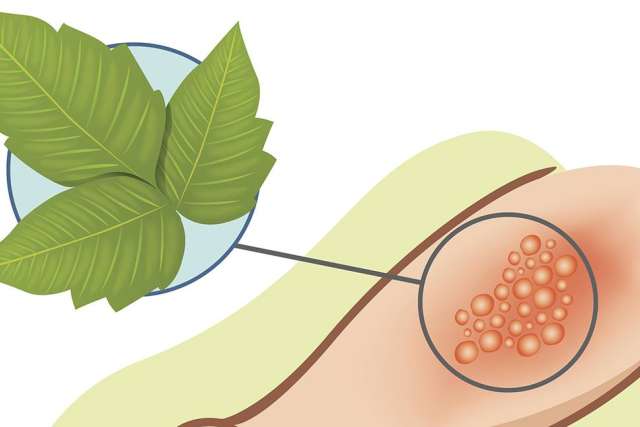Summer, even in a time of pandemic, comes with opportunities for outdoor adventures such as hiking and mountain biking. But those activities have a downside – an increased risk of exposure to poisonous plants such as ivy and oak. The leaves, stems and underground roots of poisonous plants contain an oily material called urushiol. For many people, contact with the oil can result in an itchy rash.
Identifying a poison plant rash
You may suspect a poison ivy or oak rash if you were in a natural environment and later have an area of skin that is:
- Red
- Itching intensely
- Swollen
- Blistered
If you’ve been exposed to poisonous plants before, the rash will likely appear within 48 hours. If you’ve never been exposed, the rash may not appear for up to three weeks.
Contrary to a common belief, the rash isn’t contagious if a blister bursts and the liquid inside spreads. Rather, the rash occurs only after direct contact with the plant’s oil. You may develop a rash if:
- Your skin comes in direct contact with the poisonous plant
- You touch the affected area of skin with your fingers and spread the oil when touching other body parts
- You come in contact with tools, clothing or pet hair that has the oil on it, and then touch other body parts
It is also possible to develop breathing difficulty if you inhale burned poison ivy or oak.

Getting relief from a poison ivy rash
You can usually get relief from over-the-counter treatments. At-home treatments aim to minimize the swelling and itching that comes with the rash. They include:
- Over-the-counter steroid creams such as hydrocortisone
- Calamine lotion
- Baking soda and water paste
- Oral antihistamines
- A lukewarm bath with colloidal oatmeal or one cup of baking soda
- Cool compresses
When to call a provider about a poison plant rash
In most cases, the rash will clear up within three weeks. If you’ve been exposed previously it could clear up faster. Consult your provider if:
- The rash doesn’t show signs of improvement within a week to 10 days
- The rash is severe or widespread
- Blisters ooze a pus-like fluid
- You are having difficulty breathing after inhaling smoke that may have come from burning poisonous plants
- Your skin is excessively swollen, or the itching interrupts your sleep
- You develop a fever of 100 degrees or higher
- The rash affects your genitals, mouth or eyes
Preventing a poison oak rash
You are most likely to prevent a poison ivy or oak rash when you know what to look for and avoid the questionable plants. Avoid coming in contact with the urushiol oil by:
- Creating a barrier: 15 minutes before going outdoors, apply an over-the-counter ivy blocker to your skin.
- Dressing appropriately: Socks, boots, long pants and long sleeves will protect your skin. But it’s important to carefully remove and launder the items as soon as you return home. Use gloves to remove and launder your clothes.
- Leashing your pets: Don’t allow your pets to wander off the path where their coats or fur can come in contact with poisonous plants.
- Staying on the trail: Well-maintained trails are generally free of poison ivy or oak.
- Washing up: Take a shower within 60 minutes of potential contact for best results. If your pet wandered off the trail, bathe him or her while wearing gloves. You should also clean any other materials or tools that may have come in contact with a poisonous plant.
If you’re concerned about an unknown rash, contact your primary care physician.



